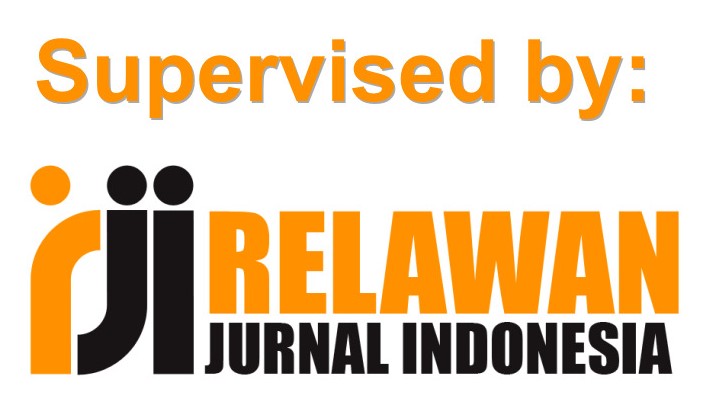Neuro- Symbolic Compliance Architectures: Real-Time Detection of Evolving Financial Crimes Using Hybrid AI
DOI:
https://doi.org/10.56127/ijst.v4i1.1961Keywords:
NeuroSym-AML, Neuro-Symbolic, Graph Neural Networks (GNNs), Financial Crime Detection, Money Laundering, FATF/OFAC Regulations, Cross-border Transactions, Hybrid AI, Adversarial Robustness, Regulatory Compliance, Real-Time DetectionAbstract
This paper proposes NeuroSym-AML, a new neuro-symbolic AI framework explicitly designed for the real-time detection of evolving financial crimes with a special focus on cross-border transactions. By combining Graph Neural Networks (GNNs) with interpretable rule-based reasoning, our system dynamically adapts to emerging money laundering patterns while ensuring strict compliance with FATF/OFAC regulations. In contrast to static rule-based systems, NeuroSym-AML shows better performance-an 83.6% detection accuracy to identify financial criminals, which demonstrated a 31% higher uplift compared with conventional systems-produced by utilizing datasets from 14 million SWIFT transactions. Furthermore, it is continuously learning new criminal typologies, providing decision trails that are available to regulatory audit in real-time. Key innovations include: (1) the continuous self-updating of detection heuristics, (2) automatic natural language processing of the latest regulatory updates, and (3) adversarial robustness against evasion techniques. This hybrid architecture bridges the scalability of machine learning with interpretability of symbolic AI, which can address crucial gaps for financial crime prevention, therefore delivering a solution for satisfying both adaptive fraud detection and transparency in decision-making in high-stakes financial environments.
References
1. Kute, D. V., Pradhan, B., Shukla, N., & Alamri, A. (2021). Deep learning and explainable artificial intelligence techniques applied for detecting money laundering–a critical review. IEEE access, 9, 82300-82317.
2. Milana, C., & Ashta, A. (2021). Artificial intelligence techniques in finance and financial markets: a survey of the literature. Strategic Change, 30(3), 189-209.
3. Hilal, W., Gadsden, S. A., & Yawney, J. (2022). Financial fraud: a review of anomaly detection techniques and recent advances. Expert systems With applications, 193, 116429.
4. Zheng, N. N., Liu, Z. Y., Ren, P. J., Ma, Y. Q., Chen, S. T., Yu, S. Y., ... & Wang, F. Y. (2017). Hybrid-augmented intelligence: collaboration and cognition. Frontiers of Information Technology & Electronic Engineering, 18(2), 153-179.
5. Calegari, R., Ciatto, G., Denti, E., & Omicini, A. (2020). Logic-based technologies for intelligent systems: State of the art and perspectives. Information, 11(3), 167.
6. Zhang, F., Chan, A. P., Darko, A., Chen, Z., & Li, D. (2022). Integrated applications of building information modeling and artificial intelligence techniques in the AEC/FM industry. Automation in Construction, 139, 104289.
7. Bathla, G., Bhadane, K., Singh, R. K., Kumar, R., Aluvalu, R., Krishnamurthi, R., ... & Basheer, S. (2022). Autonomous vehicles and intelligent automation: Applications, challenges, and opportunities. Mobile Information Systems, 2022(1), 7632892.
8. Serhani, M. A., T. El Kassabi, H., Ismail, H., & Nujum Navaz, A. (2020). ECG monitoring systems: Review, architecture, processes, and key challenges. Sensors, 20(6), 1796.
9. Huang, B., & Wang, J. (2022). Applications of physics-informed neural networks in power systems-a review. IEEE Transactions on Power Systems, 38(1), 572-588.
10. Saleem, R., Yuan, B., Kurugollu, F., Anjum, A., & Liu, L. (2022). Explaining deep neural networks: A survey on the global interpretation methods. Neurocomputing, 513, 165-180.
11. Wang, S., Qureshi, M. A., Miralles-Pechuan, L., Huynh-The, T., Gadekallu, T. R., & Liyanage, M. (2021). Applications of explainable AI for 6G: Technical aspects, use cases, and research challenges. arXiv preprint arXiv:2112.04698.
12. Blasch, E., Pham, T., Chong, C. Y., Koch, W., Leung, H., Braines, D., & Abdelzaher, T. (2021). Machine learning/artificial intelligence for sensor data fusion–opportunities and challenges. IEEE aerospace and electronic systems magazine, 36(7), 80-93.
13. Saraswat, D., Bhattacharya, P., Verma, A., Prasad, V. K., Tanwar, S., Sharma, G., ... & Sharma, R. (2022). Explainable AI for healthcare 5.0: opportunities and challenges. IEEe Access, 10, 84486-84517.
14. Reddy, B., & Fields, R. (2022, April). From past to present: a comprehensive technical review of rule-based expert systems from 1980--2021. In Proceedings of the 2022 ACM Southeast Conference (pp. 167-172).
15. Zhang, S., & Zhu, D. (2020). Towards artificial intelligence enabled 6G: State of the art, challenges, and opportunities. Computer Networks, 183, 107556.
16. Wagan, S. A., Koo, J., Siddiqui, I. F., Attique, M., Shin, D. R., & Qureshi, N. M. F. (2022). Internet of medical things and trending converged technologies: A comprehensive review on real-time applications. Journal of King Saud University-Computer and Information Sciences, 34(10), 9228-9251.
17. Ahmed, Z., Mohamed, K., Zeeshan, S., & Dong, X. (2020). Artificial intelligence with multi-functional machine learning platform development for better healthcare and precision medicine. Database, 2020, baaa010.
18. Ahmad, T., Madonski, R., Zhang, D., Huang, C., & Mujeeb, A. (2022). Data-driven probabilistic machine learning in sustainable smart energy/smart energy systems: Key developments, challenges, and future research opportunities in the context of smart grid paradigm. Renewable and Sustainable Energy Reviews, 160, 112128.
19. He, H., Gray, J., Cangelosi, A., Meng, Q., McGinnity, T. M., & Mehnen, J. (2021). The challenges and opportunities of human-centered AI for trustworthy robots and autonomous systems. IEEE Transactions on Cognitive and Developmental Systems, 14(4), 1398-1412.
20. Kakhi, K., Alizadehsani, R., Kabir, H. D., Khosravi, A., Nahavandi, S., & Acharya, U. R. (2022). The internet of medical things and artificial intelligence: trends, challenges, and opportunities. Biocybernetics and Biomedical Engineering, 42(3), 749-771.
21. Popescu, G. H., Valaskova, K., & Horak, J. (2022). Augmented reality shopping experiences, retail business analytics, and machine vision algorithms in the virtual economy of the metaverse. Journal of Self-Governance and Management Economics, 10(2), 67-81.
22. Salah, K., Rehman, M. H. U., Nizamuddin, N., & Al-Fuqaha, A. (2019). Blockchain for AI: Review and open research challenges. IEEE access, 7, 10127-10149.
23. Chang, C. W., Lee, H. W., & Liu, C. H. (2018). A review of artificial intelligence algorithms used for smart machine tools. Inventions, 3(3), 41.
24. Mitchell, D., Blanche, J., Harper, S., Lim, T., Gupta, R., Zaki, O., ... & Flynn, D. (2022). A review: Challenges and opportunities for artificial intelligence and robotics in the offshore wind sector. Energy and AI, 8, 100146.
25. Bhatore, S., Mohan, L., & Reddy, Y. R. (2020). Machine learning techniques for credit risk evaluation: a systematic literature review. Journal of Banking and Financial Technology, 4(1), 111-138.
26. Gongane, V. U., Munot, M. V., & Anuse, A. D. (2022). Detection and moderation of detrimental content on social media platforms: current status and future directions. Social Network Analysis and Mining, 12(1), 129.
27. Bullock, J., Luccioni, A., Pham, K. H., Lam, C. S. N., & Luengo-Oroz, M. (2020). Mapping the landscape of artificial intelligence applications against COVID-19. Journal of Artificial Intelligence Research, 69, 807-845.
28. Akbar, M. S., Hussain, Z., Ikram, M., Sheng, Q. Z., & Mukhopadhyay, S. (2022). 6G survey on challenges, requirements, applications, key enabling technologies, use cases, AI integration issues and security aspects. arXiv preprint arXiv:2206.00868.
29. Jain, S., Ahuja, N. J., Srikanth, P., Bhadane, K. V., Nagaiah, B., Kumar, A., & Konstantinou, C. (2021). Blockchain and autonomous vehicles: Recent advances and future directions. IEEE Access, 9, 130264-130328.
30. Javaid, M., Haleem, A., Singh, R. P., & Suman, R. (2022). Artificial intelligence applications for industry 4.0: A literature-based study. Journal of Industrial Integration and Management, 7(01), 83-111.
















